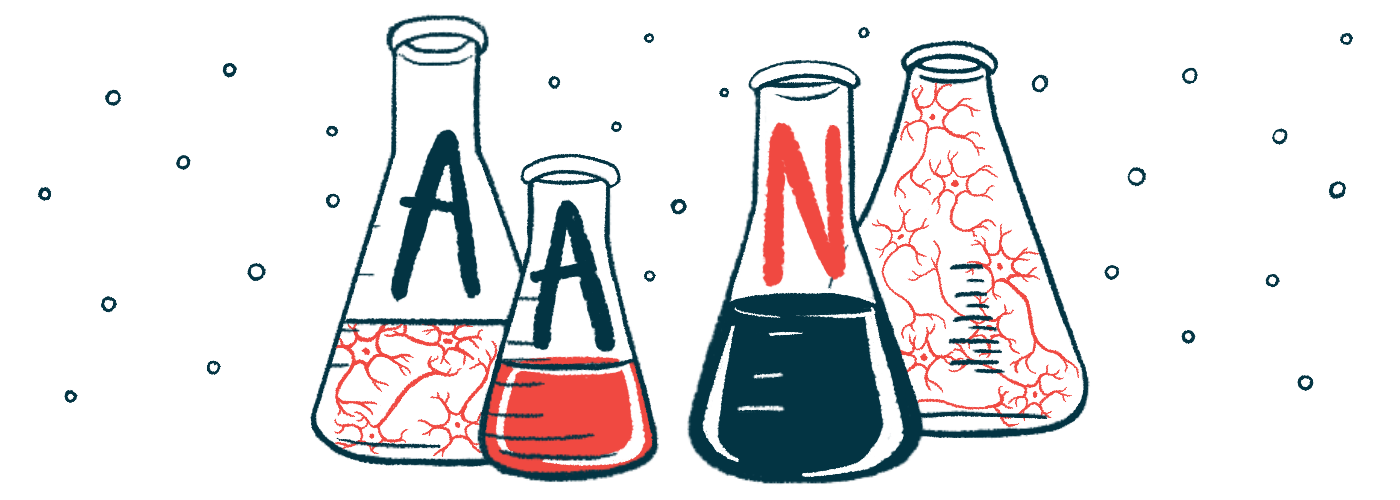AAN 2024: ND0612 improves Parkinson’s symptom control in trial
Safety, efficacy consistent regardless of age, weight, dosage

ND0612, a formation of levodopa/carbidopa administered continuously by an under-the-skin pump, led to better symptom control for people with advanced Parkinson’s disease in a Phase 3 trial, and the therapy’s efficacy and safety were consistent irrespective of patient factors like age, weight, and medication dosage.
That’s according to data discussed at the American Academy of Neurology (AAN) 2024 Annual Meeting, held April 13-18 in Colorado and online.
Alberto Espay, MD, a study investigator and consultant to ND0612’s developer NeuroDerm (a subsidiary of Mitsubishi Tanabe Pharma Corp.), presented the findings in a talk titled, “Efficacy of ND0612, a 24-hour Subcutaneous Levodopa/Carbidopa Infusion for People with Parkinson’s Disease Experiencing Motor Fluctuations: Subgroup-analyses from a Randomized, Controlled Phase 3 Study.”
“All in all, it appears that this is going to be a therapy that, regardless of different clinical demographic features, could in fact be efficacious and tolerable in the vast majority of patients,” said Espay, a professor of neurology at the University of Cincinnati.
The combination of levodopa with carbidopa is a standard treatment used to control Parkinson’s symptoms. However, long-term use of levodopa/carbidopa can result in side effects including uncontrolled movements (dyskinesia), and as the disease progresses patients often experience off time where symptoms aren’t well controlled between scheduled doses.
Results consistent across age, body type, sex
While standard levodopa/carbidopa is taken orally, ND0612 delivers a liquid formulation of the therapy under the skin using a pump, akin to under-the-skin pumps that are sometimes used to administer insulin in people with diabetes. By administering a continuous amount throughout the day, rather than relying on oral dosing, the new formulation aims to minimize side effects and off time.
A Phase 3 clinical trial dubbed BouNDless (NCT04006210) tested ND0612 against oral levodopa/carbidopa in 381 people with advanced Parkinson’s. All had been experiencing several hours of off time each day despite oral levodopa/carbidopa therapy.
Results showed that, after three months in the trial, average daily on time (where symptoms are controlled without troublesome dyskinesia) increased by more than two hours for patients given ND0612 and by less than half an hour for those on oral therapy — a statistically significant difference representing about one hour and forty minutes more on time with ND0612.
Espay’s presentation detailed subgroup analyses comparing the effects of patients who were different ages (older or younger than 65), different body types (based on body mass index, or BMI), different sexes (male or female), or taking different doses of levodopa/carbidopa.
“What we wanted to do here was to look at what potential clinical and demographic factors could conceivably give us a signal of those that are going to be better responders,” Espay said.
Across all subgroups, ND0612 consistently led to at least an hour more daily on time compared with oral therapy. There was a bit of variation, but all subgroups were getting roughly the same 1.7 hours of benefit that were seen in the overall study population.
The safety profile of ND0612 was generally comparable to that of oral levodopa/carbidopa, though reactions at the infusion site, including a few serious reactions, were reported with the pump therapy.
The safety profile of ND0612 was largely consistent across all subgroups, though Espay noted that side effects related to the therapy were reported in all three study participants given the therapy who had low BMI measurements. He said this may be because smaller, thinner patients may simply have less surface area on their skin where the pump can be applied, which could increase the risk of infusion reaction.
Note: The Parkinson’s News Today team is providing coverage of the American Academy of Neurology (AAN) 2024 Annual Meeting April 13-18. Go here to see the latest stories from the conference.







